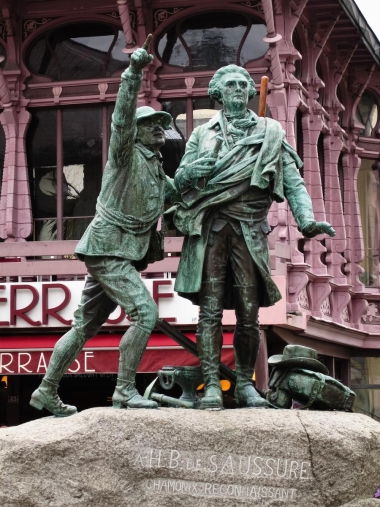- Trips
- Tour Calendar
- About Our Tours
- Plan a Trip
- Book a Trip
- About Us
- Contact Us



Like so many great discoveries, the Tour du Mont Blanc started with an inquisitive mind. In 1760 Horace-Bénédict de Saussure, a Swiss geologist and physicist living in Geneva, made his first of numerous trips to Chamonix for the purpose of collecting plant specimens. In 1767 he walked around the entire Mont Blanc massif looking for a possible route to climb to the summit of the unclimbed peak.
The Mont Blanc massif, often referred to as the Mont Blanc Range, dominates an area 60 miles by 20 miles and holds 11 summits over 4000 meters. Its flanking valleys cradle some of the longest glaciers in the Alps, so Saussure had some dramatic Alpine scenery to keep him enthralled.
While we’ll never know Saussure’s exact route, the experience must have captivated him—just as it captivates hikers today. He returned repeatedly, and soon offered a reward for the first person to reach the summit of Mont Blanc. He tried unsuccessfully to find a way from the Italian side to the summit on the Miage Glacier, and again in 1778.
He made another unsuccessful attempt in 1785 by the Gouter route (now the standard route). Eventually two Chamonix men, Michel Paccard and Jacques Balmat achieved the summit in 1786, by way of the Grands Mulets route, and in 1787 Saussure eventually made the third ascent of the mountain.
Today’s trail circumambulating the Mont Blanc is 105 miles (168 km) and passes through France, Italy, and Switzerland. The trail captures some stunningly beautiful alpine scenery, by avoiding the depths of the valleys and staying where possible on many of the high mountain slopes to offer hikers exceptional views. Anyone who undertakes this journey through mountains, forests, and deep valleys will quickly discover why the Tour du Mont Blanc is the most popular long-distance walk in Europe.